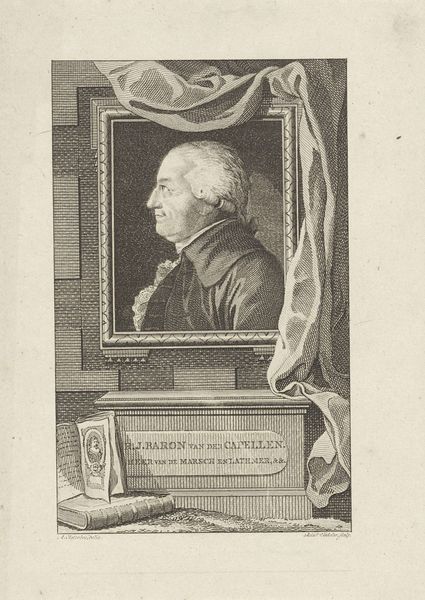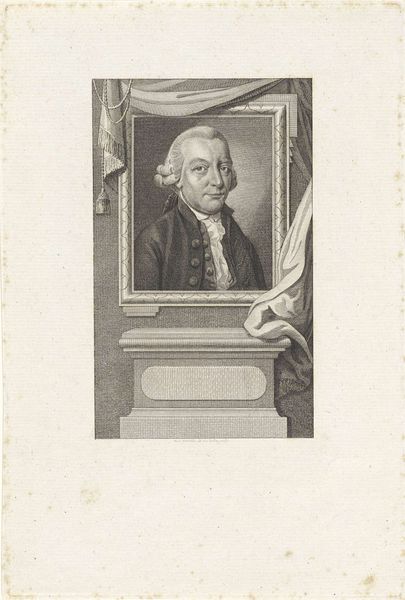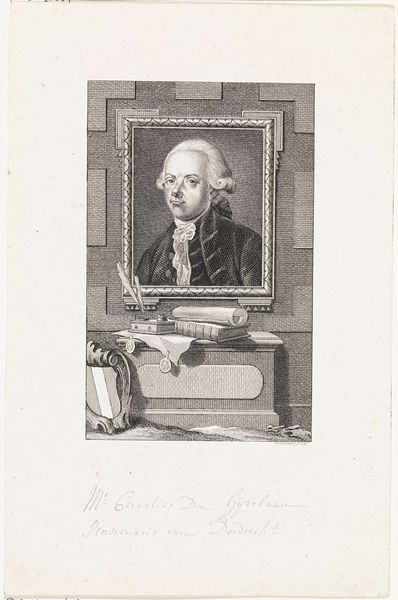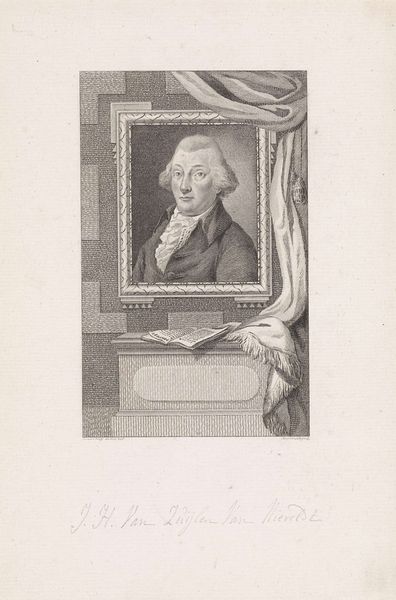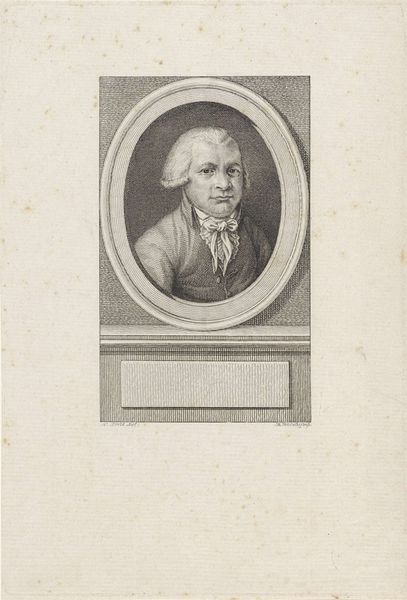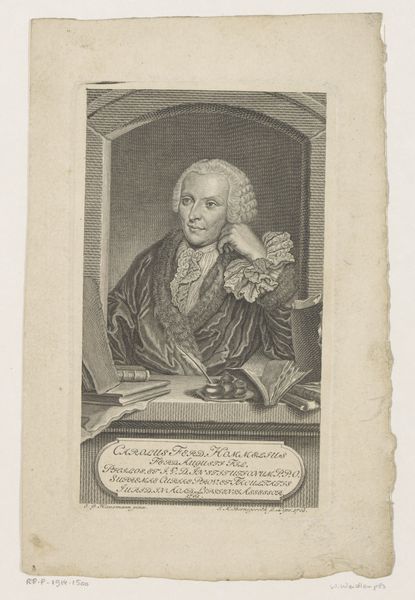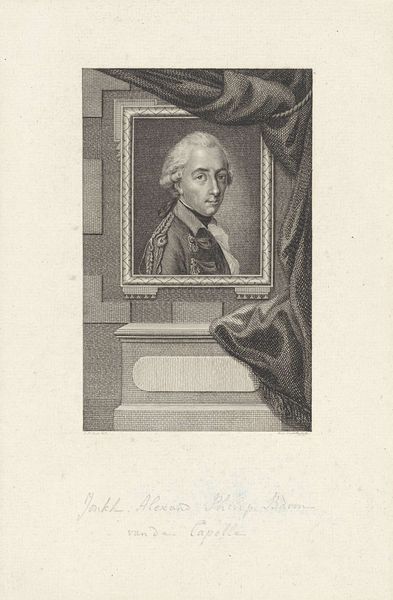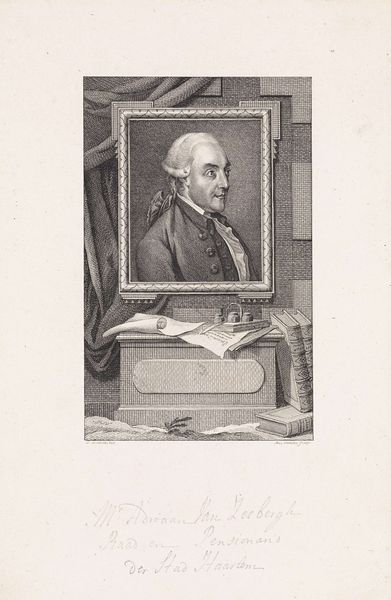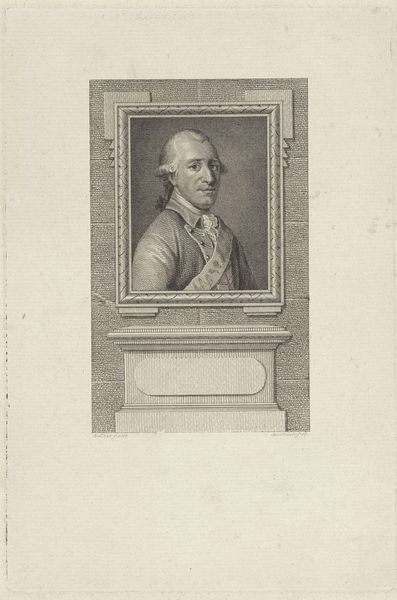
Dimensions: height 235 mm, width 155 mm
Copyright: Rijks Museum: Open Domain
Curator: Here we see Reinier Vinkeles’ "Portret van Pieter Leonard van de Kasteele," dating from between 1786 and 1809. It’s a print, employing both graphite and engraving techniques, and currently residing at the Rijksmuseum. Editor: My initial reaction is one of calculated dignity. The rigid structure of the 'portrait-within-a-portrait' format, along with the subdued tonality, presents a very formal, almost austere, image. Curator: Indeed. The composition relies heavily on carefully balanced verticals and horizontals. Note the framed portrait, seemingly hung on a paneled wall, offset by the draped curtain and the architectural base below. There is a conscious manipulation of depth and texture through the engraver’s line work. Editor: The engraver's labour is evident, isn’t it? Think about the process: transferring an image onto a plate, meticulously incising lines, applying ink, and then pressing it onto paper. All that work just to present the image of an important member of Dutch society. And the choice of graphite adds to the intricacy of this meticulous reproduction process. Curator: Precisely. Semiotically, the objects surrounding the portrait—the music sheets, the lyre—speak volumes about the sitter's refined tastes and status within the burgeoning bourgeois class. These are clearly signifiers of wealth, education, and a certain artistic sensibility. Editor: The tools of creation surrounding his image point to art's relationship with those social strata, those who patronized music and the arts. It highlights the socio-economic structures that allowed for leisure and artistic pursuit, suggesting that even an object so focused on a single person can reflect broader labour relationships and conditions of material access. Curator: Ultimately, Vinkeles delivers more than just a likeness. It is an articulation of form through contrast, texture, and studied composition, meant to elevate and immortalize its subject. Editor: It provides us with insight into production, material, and the artist’s intent, helping to consider the deeper context of how the elite cultivated their image during the late 18th and early 19th centuries.
Comments
No comments
Be the first to comment and join the conversation on the ultimate creative platform.

